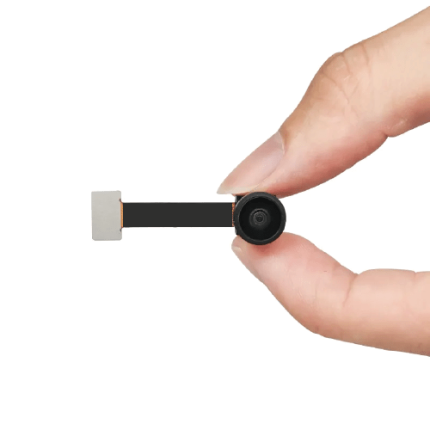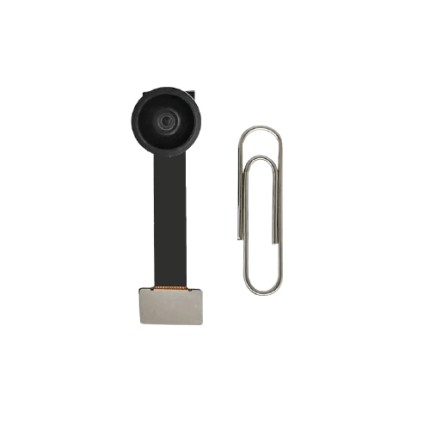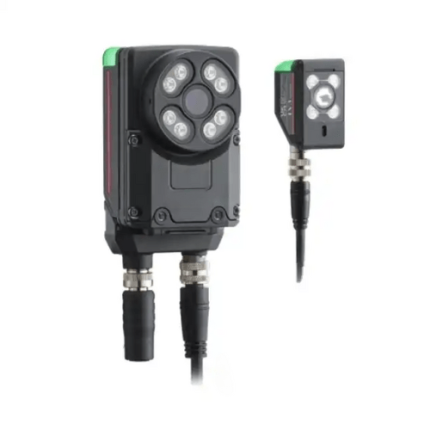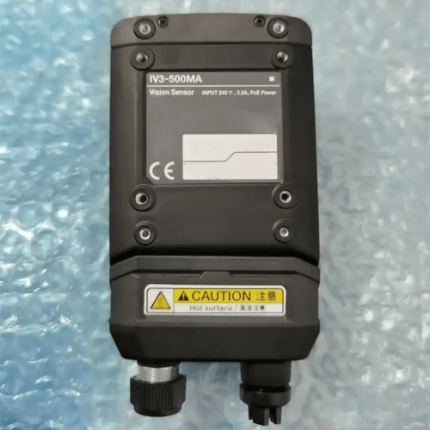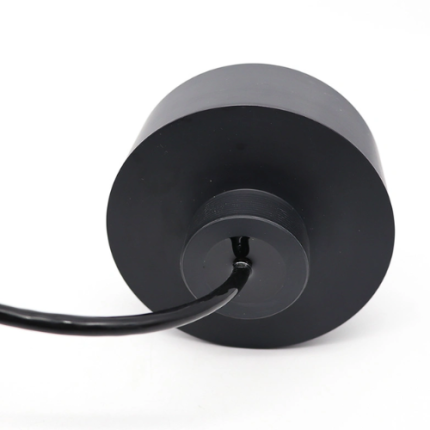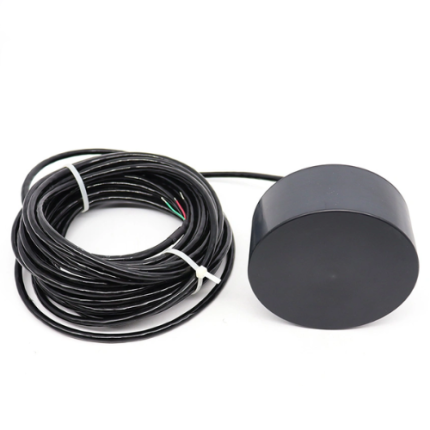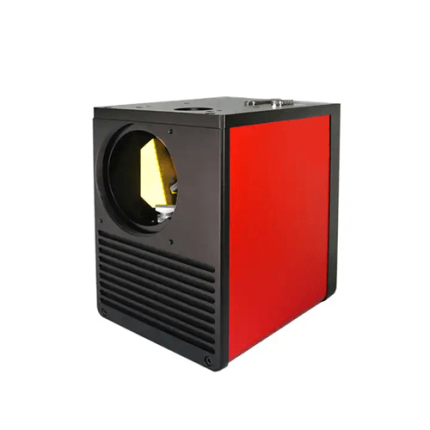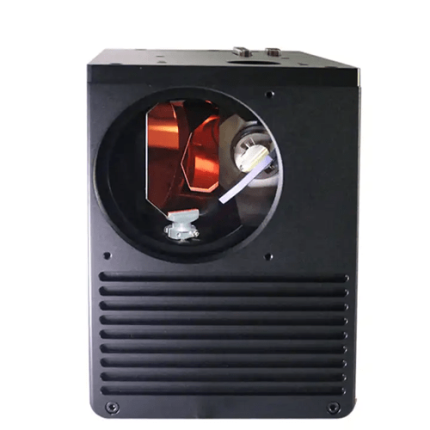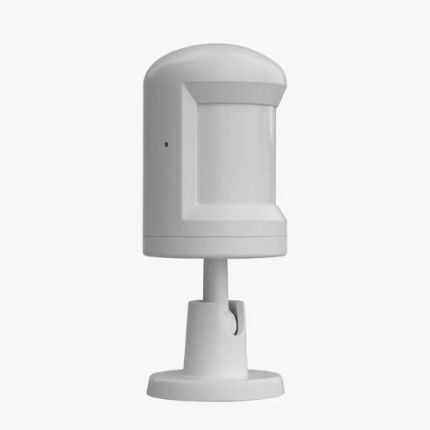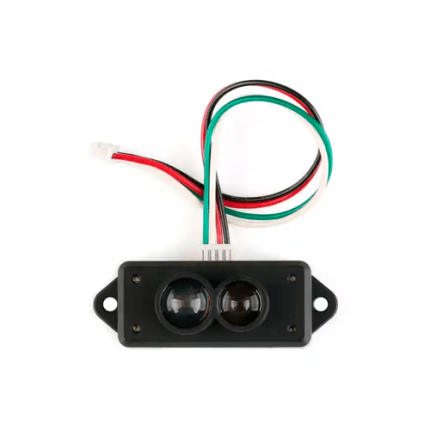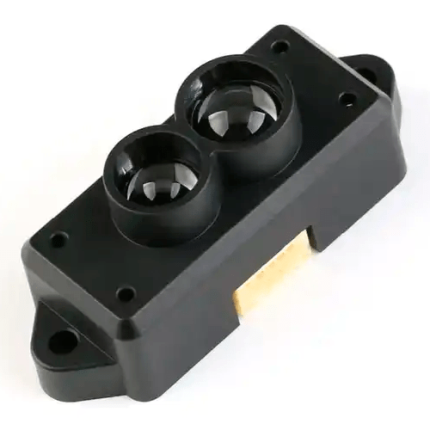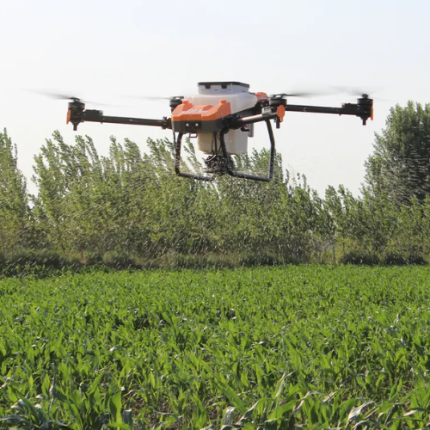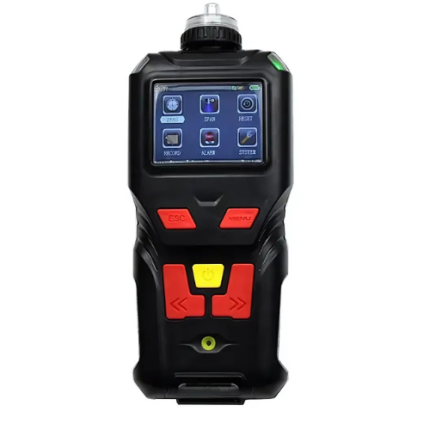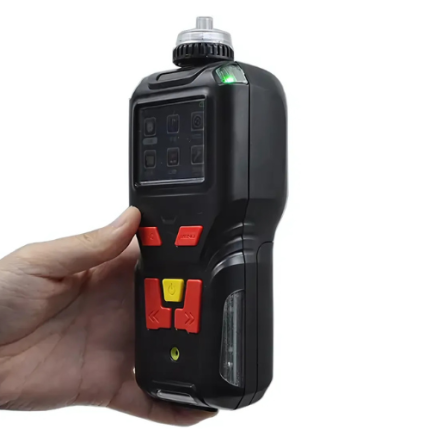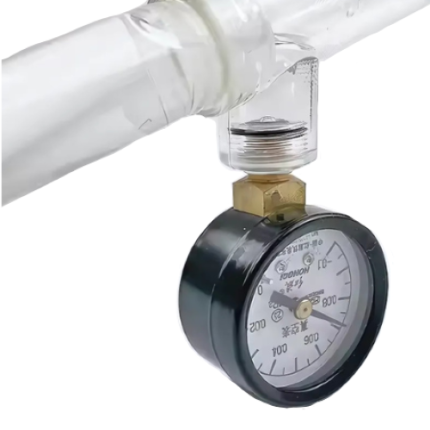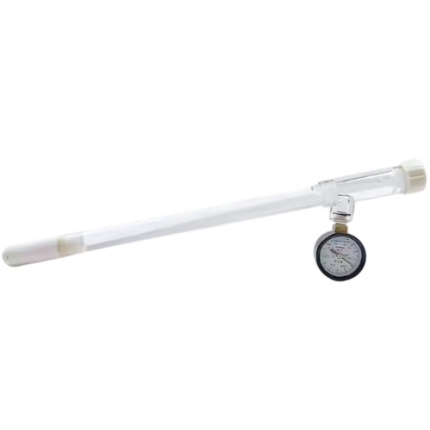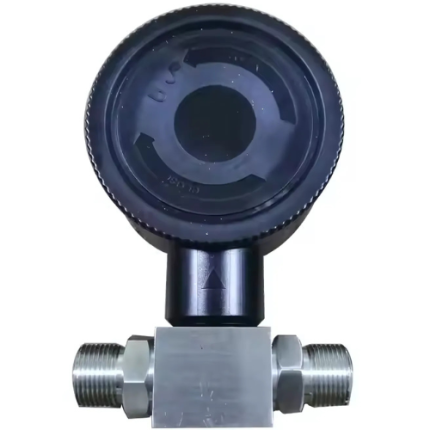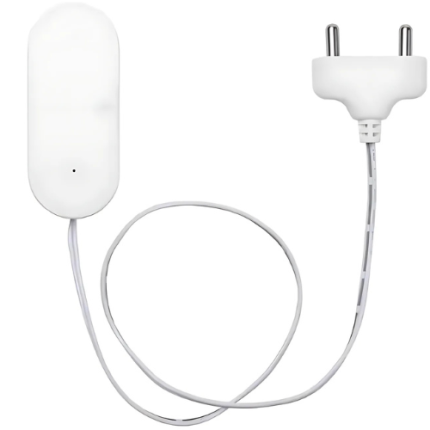With GAO’s Leading Edge IoT, M2M, Drones, and Testers & Analyzers for Networks, Environmental, Chemical, Water & Structural
Overview
Stockton, CA, and its surrounding areas serve as a dynamic hub of industries, blending rich agricultural roots with thriving manufacturing, technology, logistics, and healthcare sectors. Positioned strategically in California’s Central Valley, this region boasts a unique blend of urban innovation and rural productivity, making it an attractive destination for diverse businesses.
GAO Tek Inc., a leader in advanced B2B technology solutions, actively supports the industries in Stockton, CA, and its surrounding areas with cutting-edge products tailored to their needs. With a presence that spans four decades, GAO Tek brings extensive expertise and a track record of innovation to this vibrant region. Our customers include Fortune 500 companies, prestigious universities, government agencies, and leading research institutions.
The industries in Stockton, CA, and its surrounding areas benefit from GAO Tek’s advanced equipment and systems, including RFID technologies, IoT solutions, and test instruments, which are pivotal for operations in logistics, healthcare, agriculture, and more. We enable organizations to achieve operational excellence by offering stringent quality assurance, remote and onsite technical support, and custom-tailored solutions.
Headquartered in New York City and Toronto, Canada, GAO Tek Inc. is part of the renowned GAO Group, which also includes GAO Research Inc. and GAO RFID Inc. This collective expertise enables us to address the technical challenges faced by organizations in Stockton, CA, and its surrounding areas, driving innovation across multiple industries.
Below are products and systems related to this page:
- LoRaWAN – Cloud, Server, PC & Mobile Systems
- Zigbee End Devices
- Wi-Fi HaLow Gateways/Routers
- Zigbee Resources
- LoRaWAN Gateways
- NB-IoT Systems
- Z-Wave Gateways/Hubs
- Cellular IoT Devices
- GPS IoT Trackers/Devices
- LoRaWAN Resources
Our products are in stock can be shipped to anywhere in continental U.S. or Canada from our local warehouse. For any further information, please fill out this form or email us.
We are looking for partners. For more information on partnering with GAO, please visit Partner with GAO Tek Inc. It lists various ways to partner with GAO, such as OEM Partnerships, Technology Integration, Distribution and Reselling Opportunities, Presenting at the Leading Event TekSummit, Joint R&D Projects, Training and Consulting Services, Industry-Specific Collaborations, Research and Academic Partnerships.
Stockton, CA, and Its Surrounding Areas
Geography and Municipal Overview
Stockton, CA, located in California’s Central Valley, serves as a vital urban and industrial hub surrounded by a rich mosaic of communities. The city itself, the county seat of San Joaquin County, anchors a region comprising diverse municipalities such as Lodi, Tracy, Manteca, Ripon, and Escalon. Beyond city limits, Stockton’s neighborhoods span from the historic downtown core to suburban developments like Spanos Park and Brookside. These areas exemplify the balance between tradition and modernity that defines Stockton and its surrounding communities.
The region also encompasses unincorporated communities like French Camp and Mountain House, creating a seamless blend of agricultural, residential, and industrial spaces. Stockton’s proximity to major routes like I-5 and Highway 99 solidifies its role as a logistical gateway between Northern and Southern California.
Historical Significance and Evolution
Founded during the California Gold Rush, Stockton carries a legacy of innovation and adaptability. It was the first city in California not named in Spanish and quickly grew as a transportation and agricultural hub. The Port of Stockton, one of the region’s most significant landmarks, remains a vital deep-water port connecting Central California to global markets.
GAO Tek Inc. has been a part of Stockton’s progress, supporting industries in the area with advanced technology solutions for over four decades. By collaborating with customers in Stockton and nearby communities, GAO Tek has contributed to the technological infrastructure that underpins the region’s development.
Landmarks and Cultural Highlights
Stockton boasts a vibrant cultural scene enriched by landmarks like the Haggin Museum, the Stockton Arena, and the Bob Hope Theatre. Its waterfront, revitalized over recent decades, serves as a focal point for community events and economic activity. The historic Miracle Mile district and Lincoln Village provide a mix of shopping, dining, and cultural experiences that reflect the area’s diversity.
The city’s neighborhoods showcase unique identities. For example, the Victory Park area is known for its lush greenery and family-friendly ambiance, while downtown Stockton reflects a commitment to urban revitalization with modern office spaces and entertainment venues.
People and Communities
Stockton is renowned for its cultural diversity, with vibrant communities representing Latino, Filipino, African American, and Southeast Asian heritages. This cultural tapestry fosters a dynamic environment where innovation and tradition coexist. Stockton’s festivals, such as the Asparagus Festival and the Stockton Cambodian New Year Celebration, highlight its inclusive spirit.
Climate and Natural Beauty
Stockton enjoys a Mediterranean climate, characterized by hot, dry summers and mild, wet winters. The nearby San Joaquin River Delta offers stunning natural landscapes and recreational opportunities, including boating, fishing, and hiking. These environmental attributes enhance the region’s appeal for businesses and residents alike.
Education and Research
Stockton is home to the University of the Pacific, one of California’s oldest universities, known for its robust engineering, healthcare, and business programs. San Joaquin Delta College provides workforce training and educational programs that serve the region’s industries. These institutions have been instrumental in fostering a skilled workforce that companies like GAO Tek rely upon for growth and innovation.
Industry and Economic Significance
Stockton and its surrounding areas are economic powerhouses in California. Major industries include agriculture, logistics, manufacturing, healthcare, and renewable energy. The region’s strategic location near major highways and rail lines, combined with the Port of Stockton, positions it as a logistics and distribution center for the western United States.
GAO Tek’s Technologies, Products, and Systems for Stockton, CA and Ogden-Clearfield, UT
IoT (Internet of Things) and M2M (Machine-to-Machine Communication)
GAO Tek provides cutting-edge IoT and M2M technologies, facilitating seamless communication between devices in smart homes, industrial automation, and healthcare. These systems enhance operational efficiency and data analytics by enabling real-time data exchange and remote monitoring.
BLE (Bluetooth Low Energy)
BLE, also known as Bluetooth Smart, is ideal for low-power wireless communication. GAO Tek’s BLE solutions are widely used in fitness trackers, medical devices, and proximity marketing. These products ensure reliable short-range connectivity with minimal energy consumption.
RFID (Radio Frequency Identification)
RFID systems from GAO Tek offer advanced asset tracking, inventory management, and access control solutions. With decades of expertise in RFID technologies, including active and passive tags, GAO Tek supports diverse industries like logistics, retail, and manufacturing.
LoRaWAN (Long Range Wide Area Network)
LoRaWAN provides low-power, wide-area networking for IoT applications. GAO Tek’s LoRaWAN solutions are instrumental in smart agriculture, utility metering, and environmental monitoring, offering exceptional range and energy efficiency.
Zigbee
Zigbee, a wireless communication protocol, is perfect for low-data-rate, low-power IoT networks. GAO Tek’s Zigbee products support applications in smart lighting, home automation, and industrial control systems.
Wi-Fi HaLow
GAO Tek’s Wi-Fi HaLow solutions extend the range of IoT networks with low-power connectivity. This technology is well-suited for smart cities, industrial IoT, and agricultural monitoring, providing robust, long-distance wireless coverage.
Z-Wave
Z-Wave is a leading protocol for home automation. GAO Tek’s Z-Wave solutions enhance smart home ecosystems by enabling reliable communication between devices like thermostats, lights, and security systems.
NB-IoT (Narrowband IoT) and Cellular IoT
NB-IoT and cellular IoT solutions from GAO Tek support low-power, wide-area IoT applications over cellular networks. These technologies are critical for utilities, smart metering, and asset tracking in Stockton, CA, and Ogden-Clearfield, UT.
GPS IoT
GAO Tek’s GPS IoT systems provide real-time location tracking for vehicles, assets, and personnel. These solutions are vital for fleet management, supply chain logistics, and emergency response operations.
IoT Sensors
From temperature and humidity sensors to pressure and motion detectors, GAO Tek’s IoT sensors enable precision monitoring across industrial, agricultural, and environmental applications.
Biometrics
GAO Tek’s biometric solutions, including fingerprint and facial recognition systems, enhance security and access control in government facilities, corporate offices, and healthcare institutions.
Network Testers
Our network testers ensure robust IT infrastructure by diagnosing and troubleshooting issues in wired and wireless networks. These tools are indispensable for telecommunications, data centers, and enterprises.
Environmental Testers
GAO Tek’s environmental testers measure air quality, noise levels, and water conditions, supporting compliance with environmental standards in Stockton, CA, and Ogden-Clearfield, UT.
Structural Testers
Structural testers from GAO Tek assess the integrity of buildings, bridges, and infrastructure. These systems are vital for construction, civil engineering, and maintenance projects in these regions.
Major Industries in Stockton, CA, and Surrounding Areas
- Agriculture
- Logistics and Transportation
- Manufacturing
- Healthcare
- Education and Research
- Energy and Utilities
- Retail and Commerce
- Construction and Real Estate
- Technology and IT Services
- Arts, Entertainment, and Tourism
- Government and Public Services
- Food and Beverage Industry
Agriculture in Stockton, CA, and Its Surrounding Areas
Stockton, CA, and its surrounding areas are at the heart of the San Joaquin Valley, one of the most productive agricultural regions in the world. This area benefits from fertile soils, a Mediterranean climate, and a robust irrigation system supplied by the California Delta, enabling the cultivation of diverse crops and livestock production.
Divisions of the Agriculture Industry
- Crop Production
Crop production is the backbone of the agricultural industry in Stockton. Major crops include almonds, walnuts, grapes, tomatoes, and asparagus. The area also produces a significant quantity of cherries, melons, and leafy greens. Precision agriculture, driven by Agricultural IoT (Agri-IoT), has become a game-changer for crop monitoring, irrigation, and pest control. GAO Tek supports this transformation with devices like IoT sensors, soil moisture analyzers, and drones equipped with thermal imaging cameras for real-time field assessments. - Livestock and Dairy Farming
Livestock farming, particularly dairy production, plays a crucial role in the region’s economy. Stockton’s farms produce high volumes of milk, beef, and poultry. GAO Tek’s Agricultural IoT solutions, such as livestock tracking systems using RFID technology, help farmers monitor the health and location of animals. Combined with environmental test instruments like ammonia and methane gas detectors, these technologies ensure healthier and more sustainable operations. - Food Processing and Packaging
The agricultural outputs from Stockton feed into an extensive food processing and packaging sector. Factories utilize advanced equipment to produce canned fruits, frozen vegetables, and packaged nuts for domestic and global markets. To maintain quality, GAO Tek provides pH meters, moisture analyzers, and water quality testers essential for food safety compliance. - Irrigation and Water Management
Given the importance of irrigation in the semi-arid climate of Stockton, efficient water management systems are critical. GAO Tek offers technologies like conductivity testers and turbidity meters to monitor water quality. Additionally, smart irrigation systems powered by IoT sensors ensure optimal water use, reducing waste while maximizing crop yields. - AgTech Innovation and Sustainability
Stockton’s agriculture industry is embracing AgTech solutions to improve efficiency and sustainability. Innovations such as drones for crop spraying, predictive analytics using IoT, and renewable energy sources like solar farms are becoming increasingly common. GAO Tek’s Industrial IoT systems, including connected weather monitoring stations and GPS-enabled fleet management IoT tools, provide actionable insights for modern agricultural practices.
GAO Case Studies
- Precision Irrigation Monitoring
A large walnut grower adopted GAO Tek’s Agri-IoT system featuring IoT sensors and soil moisture analyzers to optimize irrigation schedules. This resulted in a 25% reduction in water usage and a significant increase in yield quality. - Livestock Health Tracking
A regional dairy farm implemented GAO Tek’s RFID livestock tracking system and environmental gas detectors to monitor animal health and barn air quality. The solution reduced disease incidents and improved milk production efficiency. - Supply Chain Traceability
A tomato processing facility used GAO Tek’s barcode and RFID solutions to enhance supply chain traceability from farm to shelf. The system improved inventory accuracy and compliance with food safety regulations. - Pest Control with IoT Drones
A vineyard integrated GAO Tek’s drones equipped with IoT cameras and predictive analytics to identify pest hotspots. This targeted approach reduced pesticide use and preserved grape quality for premium wine production. - Environmental Compliance in Water Use
A rice farm deployed GAO Tek’s water quality testers and IoT-enabled flow meters to meet state environmental compliance standards. This ensured sustainable practices while maintaining profitability.
Logistics and Transportation Industry in Stockton, CA, and Its Surrounding Areas
Stockton, CA, and its surrounding areas serve as a critical logistics and transportation hub in California, leveraging its central location in the San Joaquin Valley. This region connects Northern and Southern California, and its extensive infrastructure—including highways, railways, and the Port of Stockton—enables efficient distribution across the U.S. and global markets.
Divisions of the Logistics and Transportation Industry
- Freight and Cargo Transportation
Stockton’s freight sector is powered by the convergence of major highways such as I-5, I-205, and Highway 99, as well as the Burlington Northern Santa Fe (BNSF) and Union Pacific railroads. The Port of Stockton, an inland deep-water port, handles bulk goods, containers, and automobiles. GAO Tek supports the freight industry with technologies like GPS IoT for real-time tracking, RFID solutions for inventory management, and IoT-enabled fleet monitoring systems to optimize delivery schedules and fuel efficiency. - Warehousing and Distribution
Numerous distribution centers are established in Stockton to cater to e-commerce, retail, and manufacturing industries. Facilities in this region benefit from advanced inventory management systems, including GAO Tek’s barcode scanners, RFID tags, and warehouse IoT sensors for climate control and asset tracking. Such technologies enhance operational efficiency and ensure compliance with safety standards. - Intermodal Transportation
The integration of road, rail, and waterway systems allows seamless movement of goods in Stockton. Intermodal terminals facilitate the transfer of containers between modes of transportation, reducing transit times. GAO Tek’s fiber optic transceivers and Ethernet testers ensure robust communication networks critical for managing intermodal operations. - Public Transit and Urban Mobility
Stockton’s public transportation, including buses operated by San Joaquin Regional Transit District (RTD), supports regional mobility. GAO Tek offers solutions such as passenger counting systems using IoT sensors and smart ticketing systems to enhance the efficiency of public transit networks. - Aerospace and Aviation Logistics
Stockton Metropolitan Airport (SCK) plays a growing role in cargo and passenger services. GAO Tek’s aviation IoT systems, including GPS-based tracking devices and predictive maintenance sensors, improve operational safety and efficiency for air cargo handlers and airlines. - Smart Logistics and IoT Integration
With the rise of Logistics 4.0, Stockton is adopting smart logistics solutions powered by IoT. GAO Tek’s Industrial IoT technologies, such as connected vehicle systems (V2X), smart grid integration for electric fleets, and predictive maintenance IoT tools, streamline supply chain operations and reduce costs.
GAO Case Studies
- Real-Time Fleet Monitoring
A regional trucking company deployed GAO Tek’s GPS IoT systems and RFID tags to track shipments in real time. This solution reduced delivery delays and enhanced route optimization, saving operational costs. - Warehouse Automation
A major distribution center implemented GAO Tek’s IoT sensors and barcode systems to automate inventory tracking and environmental monitoring. This improved accuracy and compliance with temperature-sensitive goods requirements. - Port Logistics Optimization
A logistics firm at the Port of Stockton used GAO Tek’s fiber optic communication tools and IoT-enabled equipment monitoring systems to enhance cargo handling efficiency. This technology minimized equipment downtime and streamlined port operations. - Rail Freight Safety
A rail operator adopted GAO Tek’s environmental sensors and vibration meters to monitor track conditions and prevent derailments. These systems increased safety while reducing maintenance costs. - Smart Transit Implementation
A public transit operator in Stockton employed GAO Tek’s IoT-enabled passenger counting systems and real-time tracking devices to optimize bus schedules and improve customer satisfaction.
Manufacturing in Stockton, CA, and Its Surrounding Areas
Stockton, CA, and its surrounding areas boast a thriving manufacturing industry that has evolved into a cornerstone of the region’s economy. Strategically located with access to the Port of Stockton, major railways, and highways, the region serves as a hub for diverse manufacturing sectors. These industries range from food processing and metal fabrication to advanced electronics and automotive parts production, leveraging both its skilled workforce and state-of-the-art facilities.
Divisions of the Manufacturing Industry
- Food and Beverage Manufacturing
Stockton is home to numerous food processing plants that transform the agricultural outputs of the San Joaquin Valley into packaged goods for global distribution. Products like canned fruits, frozen vegetables, and processed nuts dominate this sector. GAO Tek supports these facilities with essential devices like pH meters, moisture analyzers, and water quality testers, ensuring compliance with stringent food safety standards. IoT-enabled solutions, including smart sensors and predictive maintenance IoT systems, optimize production efficiency and reduce downtime. - Metal Fabrication and Machinery
Metal fabrication is integral to Stockton’s manufacturing landscape, with facilities specializing in the production of construction materials, heavy machinery, and precision components. Advanced tools like GAO Tek’s ultrasonic flaw detectors and vibration meters are vital for ensuring the structural integrity of manufactured parts. IoT-enabled systems enhance operations by providing real-time monitoring and automation, fostering the adoption of Manufacturing 4.0. - Automotive and Aerospace Components
The region’s strategic location and logistics infrastructure make it a key player in producing automotive and aerospace parts. Manufacturers in this sector rely on high-precision instruments such as GAO Tek’s hardness testers, coating thickness gauges, and industrial endoscopes. Our fiber optic testers and OTDR devices are instrumental in ensuring the reliability of electronic components used in vehicles and aircraft systems. - Electronics and Advanced Technologies
Stockton’s growing electronics manufacturing sector produces semiconductors, sensors, and other high-tech components. GAO Tek offers an array of solutions, including fiber optic fusion splicers, variable optical attenuators, and Ethernet testers, enabling the seamless assembly and testing of complex electronic systems. Additionally, Industrial IoT tools, like connected manufacturing systems, streamline production and enhance quality control. - Construction Materials and Prefabrication
The demand for construction materials has surged with the expansion of Stockton and its suburbs. Factories produce items like pre-cast concrete, steel structures, and other building materials. GAO Tek’s structural testing tools, such as thermal imagers and surface roughness testers, help manufacturers meet safety and durability standards. IoT sensors monitor equipment performance, ensuring timely maintenance and reducing operational costs. - Renewable Energy and Environmental Solutions
Stockton’s manufacturing sector increasingly focuses on renewable energy and eco-friendly technologies. Solar panel production, wind turbine assembly, and energy-efficient equipment manufacturing are emerging trends. GAO Tek contributes with environmental test instruments, including gas analyzers and radiation meters, ensuring adherence to environmental compliance standards while supporting sustainable growth.
GAO Case Studies
- Smart Maintenance in Food Processing
A regional fruit processing plant implemented GAO Tek’s IoT sensors and vibration meters for predictive maintenance. The solution reduced equipment failures and improved overall productivity by 20%. - Quality Assurance in Metal Fabrication
A steel fabrication facility adopted GAO Tek’s ultrasonic flaw detectors and surface roughness gauges for quality assurance, enhancing product reliability for large-scale construction projects. - Automotive Component Traceability
An automotive parts manufacturer utilized GAO Tek’s barcode systems and RFID solutions for enhanced traceability and inventory management. The technology streamlined operations and ensured compliance with industry regulations. - Energy-Efficient Manufacturing
A solar panel production facility incorporated GAO Tek’s gas analyzers and environmental compliance monitoring systems to meet sustainability goals and state emission standards. - Smart Factory Transformation
A prefabrication plant transitioned to a smart factory setup with GAO Tek’s IoT-enabled industrial automation tools and fiber optic testers. This modernization increased operational efficiency and reduced waste by 30%.
Healthcare in Stockton, CA, and Its Surrounding Areas
Stockton, CA, and its surrounding areas boast a dynamic healthcare industry, serving as a critical hub for medical services in the San Joaquin Valley. With a growing population, the region offers a wide spectrum of healthcare services, from advanced medical treatments to community wellness initiatives. Leading healthcare institutions and a robust network of clinics and specialized facilities underpin the industry.
Divisions of the Healthcare Industry
- Hospitals and Medical Centers
Stockton is home to prominent hospitals such as St. Joseph’s Medical Center and Dameron Hospital. These facilities provide comprehensive care, including emergency services, surgical procedures, and specialized treatments. GAO Tek Inc.’s healthcare IoT (IoMT) solutions, such as remote patient monitoring systems and connected medical devices, enhance patient care by enabling real-time health data collection and analysis. Additionally, GAO Tek’s fiber optic testers and OTDRs support the high-speed networks critical to modern healthcare IT infrastructures. - Primary and Specialty Care Clinics
Primary care clinics and specialty practices form the backbone of outpatient healthcare in the region. Specialists in areas such as cardiology, orthopedics, and oncology operate cutting-edge facilities. To assist in diagnostics, GAO Tek offers devices like ultrasonic flow meters and thermal imagers used in medical equipment maintenance, ensuring optimal performance and patient safety. - Long-Term Care and Rehabilitation
The aging population in Stockton drives demand for long-term care facilities and rehabilitation centers. These facilities benefit from GAO Tek’s IoT sensors and RFID tracking systems to monitor patient activities and ensure efficient staff management. For environmental safety, GAO provides gas analyzers and air quality monitoring systems to maintain healthy living conditions. - Biotechnology and Pharmaceutical Research
Stockton’s healthcare ecosystem includes biotechnology startups and pharmaceutical research facilities. These organizations leverage advanced testing and data collection technologies. GAO Tek supports these efforts with viscometers, pH meters, and melting point testers, ensuring precise quality control during drug development. - Public Health and Wellness Programs
Local health departments and non-profit organizations focus on public health initiatives, including vaccination drives and chronic disease management. Environmental compliance is vital for these programs, and GAO Tek’s environmental test instruments, such as ozone and carbon monoxide detectors, play a role in maintaining safe health service environments. - Telemedicine and Digital Health
The COVID-19 pandemic accelerated the adoption of telemedicine in Stockton. With advancements in digital health, GAO Tek’s IoT devices, including wearable health monitors and biometric scanners, enable remote diagnostics and patient engagement. High-quality Ethernet testers from GAO Tek ensure uninterrupted telehealth services through reliable network connections.
GAO Case Studies
- Advanced Patient Monitoring
A regional hospital integrated GAO Tek’s remote patient monitoring IoT sensors into its intensive care units. This system improved patient outcomes by alerting clinicians to real-time vital sign changes. - Efficient Asset Tracking
A healthcare facility adopted GAO Tek’s RFID solutions to track critical medical equipment. The solution reduced lost equipment incidents and improved operational efficiency. - Environmental Safety in Hospitals
A major hospital utilized GAO Tek’s gas detectors and air quality monitoring systems to maintain safe environments in operating rooms and laboratories. This ensured compliance with stringent healthcare standards. - Telemedicine Infrastructure Support
A rural clinic deployed GAO Tek’s optical fiber testers and power meters to strengthen its telemedicine infrastructure. The result was improved connectivity for virtual consultations, benefiting remote communities. - Biotech Lab Quality Control
A local biotech firm implemented GAO Tek’s water quality testers and viscometers for their research labs. The precision instruments enhanced their drug formulation processes, leading to successful product trials.
Education and Research in Stockton, CA, and Its Surrounding Areas
Energy and Utilities Industry in Stockton, CA, and Its Surrounding Areas
Ensuring optimal performance in GPS IoT systems is essential for organizations that depend on precise, real-time location data. GPS IoT performance can be impacted by a variety of environmental and technological factors, and troubleshooting is often required to maintain operational efficiency. At GAO Tek Inc., headquartered in New York City and Toronto, we understand the demands of high-performance GPS IoT systems and provide advanced solutions backed by four decades of expertise. By addressing key performance factors, resolving common issues, and utilizing robust monitoring tools, we help our clients achieve reliability in even the most challenging conditions.
Factors Affecting GPS IoT Performance
- Range: GPS IoT devices operate within a specified range, beyond which signal strength and accuracy may degrade. Range limitations depend on both the GPS module specifications and the environmental conditions. Devices in open, unobstructed areas perform better than those in urban or heavily forested environments where signal obstruction is common. GAO Tek’s GPS IoT solutions are designed to support extended range applications, offering robust connectivity solutions for diverse deployment environments.
- Interference: GPS IoT systems are vulnerable to interference from other radio frequency (RF) sources, physical obstructions, and atmospheric conditions. RF interference from devices operating in similar frequency bands, such as cellular towers or other IoT devices, can impact signal quality. Additionally, natural barriers, such as mountains or dense structures, may block or weaken GPS signals. GAO Tek’s solutions include technologies to mitigate interference, such as filtering mechanisms and signal correction algorithms, to ensure reliable data acquisition and transmission.
- Network Traffic: High network traffic can lead to latency issues and reduced data throughput, affecting GPS IoT performance in multi-device networks. This is particularly relevant in large-scale deployments, such as smart cities or logistics tracking, where numerous devices communicate over the same network. GAO Tek’s GPS IoT products are equipped with advanced traffic management features, optimizing data flow and reducing congestion to ensure consistent performance even in high-traffic scenarios.
By understanding these factors, organizations can proactively address potential performance issues, leveraging GAOTek’s customized GPS IoT solutions to optimize range, reduce interference, and manage network traffic effectively.
Troubleshooting Common GPS IoT Issues
Efficient troubleshooting is essential for maintaining GPS IoT network performance and minimizing downtime. Below are some of the common issues encountered in GPS IoT networks and recommended approaches to resolve them.
- Device Pairing Issues: Pairing errors can arise from compatibility issues, outdated firmware, or network conflicts. To resolve pairing issues, ensure that all devices are updated with the latest firmware, compatible with the network settings, and that they meet the system’s pairing requirements. GAO Tek provides GPS IoT solutions with seamless integration and automated firmware updates, reducing the likelihood of pairing issues and enabling quick troubleshooting.
- Signal Loss: Signal loss is a frequent issue in GPS IoT networks, often caused by poor connectivity, interference, or environmental obstacles. To troubleshoot signal loss, check device connectivity settings and assess whether environmental factors are affecting the signal. For devices in high-interference zones, consider adjusting device placement or using signal-boosting accessories. GAO Tek’s GPS IoT systems are equipped with diagnostics tools that quickly identify and resolve signal issues, helping clients maintain uninterrupted GPS data transmission.
- Location Inaccuracy: Devices may report inaccurate GPS coordinates due to signal interference, weak satellite connections, or improper device calibration. Troubleshooting location inaccuracy often involves recalibrating the device, relocating it to reduce obstructions, and ensuring clear satellite line-of-sight. GAO Tek’s solutions are designed with built-in calibration tools and support automatic recalibration for improved accuracy in location tracking.
- Battery and Power Issues: In battery-powered GPS IoT devices, power issues can lead to device shutdowns or data transmission interruptions. Regularly monitor battery levels and recharge or replace batteries as needed to prevent power-related disruptions. GAO Tek’s GPS IoT solutions include power management features and battery monitoring tools, allowing clients to avoid downtime due to unexpected power loss.
By implementing GAOTek’s troubleshooting best practices and utilizing our monitoring and diagnostic tools, organizations can resolve these common issues efficiently, ensuring stable and reliable GPS IoT performance.
Tools for Monitoring and Testing GPS IoT Networks
Monitoring and testing tools are invaluable for maintaining GPS IoT performance, enabling early detection of issues, and providing insights into network health. GAO Tek provides an array of GPS IoT monitoring tools tailored to meet the needs of diverse applications, ensuring continuous network visibility and control.
- Network Monitoring Software: Network monitoring software provides a centralized view of all connected GPS IoT devices, offering real-time data on device status, signal strength, and performance metrics. This allows users to detect connectivity issues, data lag, or other performance-related anomalies immediately. GAO Tek’s solutions feature integrated network monitoring capabilities, empowering clients to track and manage device performance from a single, intuitive dashboard.
- Signal Testing Tools: Signal testing tools help verify signal strength and quality, ensuring devices are operating within optimal parameters. These tools are particularly useful in large or distributed networks where consistent signal integrity is crucial. GAO Tek’s GPS IoT solutions come with signal testing tools that assess GPS connectivity and signal quality, enabling organizations to diagnose and correct performance issues quickly.
- Diagnostic and Analytics Platforms: Advanced diagnostic tools provide insights into GPS IoT network health and performance trends, identifying areas for improvement. These platforms can analyze historical data to detect patterns, optimize device placement, and reduce interference. GAO Tek offers diagnostic and analytics platforms that help organizations proactively enhance their GPS IoT networks, facilitating long-term performance optimization.
- Remote Management Tools: For GPS IoT systems deployed in remote or hard-to-reach locations, remote management tools allow administrators to monitor and adjust devices without requiring physical access. This is particularly beneficial for sectors like logistics, agriculture, and oil and gas, where remote deployments are common. GAO Tek’s GPS IoT solutions support remote management, ensuring uninterrupted oversight and troubleshooting of devices from any location.
By implementing GAOTek’s state-of-the-art GPS IoT monitoring and testing tools, organizations can maintain optimal performance across their networks, prevent downtime, and achieve higher operational efficiency.
Retail and Commerce in Stockton, CA, and Its Surrounding Areas
Evolve alongside the broader Internet of Things (IoT) ecosystem. As a leading provider of advanced IoT technologies, GAO Tek Inc. is at the forefront of this transformation, offering solutions that adapt to the growing demands of location-based services. In this section, we explore GPS IoT’s evolving role, upcoming updates and standards, potential challenges, and its comparison with emerging technologies.
GPS IoT’s Role in the IoT Ecosystem
GPS IoT technology plays a critical role in the broader IoT ecosystem by enabling real-time location tracking and data collection across various industries. As the IoT landscape grows, GPS IoT systems are increasingly relied upon to provide not just location information but also data for advanced analytics, automation, and decision-making. From supply chain management and smart cities to agriculture and asset tracking, GPS IoT is integral to enhancing operational efficiency, reducing costs, and driving innovation.
With the increasing integration of sensors, actuators, and cloud technologies, GPS IoT solutions are set to become more intelligent and interconnected, forming the backbone of location-based IoT applications. GAOTek’s GPS IoT products are designed to support these advancements, offering cutting-edge capabilities that enhance data accuracy, device interoperability, and seamless integration with other IoT systems. As the future of IoT evolves, GPS IoT will remain a cornerstone technology, with applications growing in sophistication and scope.
Upcoming GPS IoT Updates and Standards
As GPS IoT technology continues to advance, several updates and new standards are on the horizon to improve functionality, performance, and interoperability.
Some of the key updates include:
- Integration with 5G Networks: The rollout of 5G networks will have a significant impact on GPS IoT systems, allowing for faster data transmission, lower latency, and improved connectivity for real-time tracking. GPS IoT devices will leverage the higher bandwidth and speed offered by 5G to transmit large amounts of location data with greater efficiency and accuracy. GAO Tek is already preparing to incorporate 5G capabilities into our GPS IoT solutions, ensuring that our products stay ahead of the curve.
- Improved Satellite Navigation Systems: The Global Navigation Satellite System (GNSS) landscape is evolving with advancements in satellite technology, such as the introduction of Galileo in Europe and Beidou in China. GPS IoT systems will increasingly support multiple GNSS constellations, offering enhanced accuracy, redundancy, and global coverage. Our GPS IoT products are designed to be compatible with these new systems, ensuring clients benefit from the most accurate and reliable positioning information.
- Low Power and Energy-Efficient Standards: As IoT devices proliferate in remote and battery-powered environments, power consumption remains a major concern. Future GPS IoT systems will adopt low-power standards such as LoRaWAN, NB-IoT, and Zigbee to extend battery life without compromising performance. GAO Tek is committed to offering energy-efficient GPS IoT devices that optimize battery life, even in power-constrained environments.
- Data Privacy and Security Standards: As the use of GPS IoT expands, the importance of data privacy and security will increase. The implementation of GDPR-compliant and other industry-specific security standards will be essential for maintaining trust and ensuring the safe handling of sensitive location data. At GAO Tek, we are committed to delivering GPS IoT solutions with robust security features that adhere to global privacy standards.
These updates and standards will shape the future of GPS IoT, driving innovation and improving its application across industries. GAO Tek will continue to stay at the forefront of these developments, integrating new technologies into our solutions to meet the evolving needs of our clients.
Potential Challenges and Opportunities in GPS IoT Development
While GPS IoT technology holds great promise, there are several challenges that developers and businesses must address to fully harness its potential:
- Signal Interference and Accuracy: One of the primary challenges in GPS IoT systems is signal interference, especially in urban environments with dense buildings or in areas with high electromagnetic interference. Although new technologies like multi-GNSS and advanced algorithms are improving signal accuracy, challenges remain in ensuring reliable performance in challenging environments. GAO Tek’s GPS IoT solutions leverage advanced signal processing and filtering techniques to mitigate these issues, ensuring superior accuracy in even the most difficult conditions.
- Scalability and Network Congestion: As IoT networks grow, scalability becomes a concern. The ability to efficiently manage and scale GPS IoT systems, particularly in large-scale deployments such as smart cities, is crucial. Additionally, network congestion and bandwidth limitations can lead to latency and slow data transmission. With our expertise in large-scale IoT deployments, GAO Tek helps clients scale their GPS IoT networks while maintaining optimal performance through advanced network management solutions.
- Cost Considerations: GPS IoT devices and networks can be expensive to deploy and maintain, particularly for large organizations with widespread deployments. As demand for GPS IoT solutions grows, there will be increased pressure to reduce costs while maintaining high performance. At GAO Tek, we focus on delivering cost-effective GPS IoT solutions without compromising on quality or functionality, making it easier for businesses to integrate location tracking technology into their operations.
Despite these challenges, the growth of GPS IoT presents significant opportunities. The continued demand for real-time location-based services, improved navigation capabilities, and better asset management will drive further advancements in the technology. GAO Tek is well-positioned to seize these opportunities, delivering cutting-edge solutions to meet the needs of businesses worldwide.
GPS IoT vs. Emerging Technologies (e.g., Matter, Thread)
As GPS IoT continues to evolve, new technologies are emerging that offer complementary capabilities and may eventually influence or integrate with GPS IoT systems. Technologies such as Matter and Thread, which focus on enhancing smart device interoperability, represent some of the most significant developments in the IoT ecosystem.
GPS IoT vs. Matter
Matter is a new open-source standard that aims to unify the smart home ecosystem, providing interoperability between different manufacturers and devices. While Matter supports a broader range of connectivity protocols, including Ethernet, Wi-Fi, and Thread, it is designed to work seamlessly with GPS IoT, offering complementary functionality. GPS IoT, with its low-power and reliable mesh networking, will continue to play an important role in home automation and IoT networks that require extensive device connectivity.
- Matter: Matter, an open-source connectivity standard, aims to unify the fragmented IoT ecosystem by providing a single protocol for device communication. While Matter focuses primarily on interoperability, its integration with GPS IoT could offer enhanced location-based services within smart homes and buildings. For example, Matter’s secure and reliable communication can be used to connect GPS IoT devices with other smart systems, providing advanced location tracking in a unified IoT network. GAO Tek is exploring how Matter can complement our GPS IoT products, creating more seamless integration across IoT devices.
- Thread: Thread is a low-power, wireless protocol designed for IoT devices in home automation and other applications. Unlike GPS IoT systems that focus on real-time location tracking, Thread focuses on device connectivity and communication. However, by integrating Thread’s mesh networking capabilities with GPS IoT systems, we can create highly efficient, self-healing, and low-power networks that extend the range and connectivity of GPS devices in smart homes and other IoT applications. GAO Tek is actively researching how to leverage Thread’s technology alongside GPS IoT for optimized, scalable solutions.
While GPS IoT will remain central to location-based services, technologies like Matter and Thread will complement and enhance its functionality, driving more advanced and interconnected IoT ecosystems. As a leader in IoT solutions, GAOTek is committed to exploring these emerging technologies and integrating them with our GPS IoT offerings to deliver innovative, future-proof solutions.
Construction and Real Estate Industry in Stockton, CA, and Its Surrounding Areas
GPS IoT technology has carved out a significant role in the digital landscape, enabling precise location-based services across industries and fueling innovations in logistics, fleet management, agriculture, and more. As we summarize GPS IoT’s strengths and weaknesses, we aim to provide clarity on how GAO Tek Inc.’s GPS IoT solutions can empower businesses, along with resources for further exploration into this dynamic field.
Summary of GPS IoT’s Strengths and Weaknesses
Strengths of GPS IoT
GPS IoT’s strengths lie in its ability to provide real-time location data and robust tracking capabilities, crucial for applications requiring precise monitoring and coordination of assets, vehicles, and resources. The technology has also advanced significantly in terms of accuracy, with multi-constellation GNSS (Global Navigation Satellite Systems) integration and 5G connectivity enhancing performance. GPS IoT’s adaptability is evident in various industries, from optimizing logistics in smart cities to supporting location-based services in agriculture and healthcare. At GAO Tek, we prioritize these strengths in our GPS IoT solutions, providing reliable, scalable, and highly customizable technology to meet specific business needs.
Weaknesses of GPS IoT
Despite its many benefits, GPS IoT also has limitations. Challenges include potential signal interference in urban canyons or dense environments and power consumption concerns for battery-powered IoT devices. Additionally, privacy and security considerations are increasingly critical as GPS IoT systems handle sensitive location data. GAO Tek addresses these challenges with advanced filtering, secure data protocols, and energy-efficient designs, offering GPS IoT devices that perform robustly even in challenging conditions. We understand that these limitations can impact certain applications, and we work closely with clients to mitigate them through cutting-edge technology and expert support.
Final Thoughts on Choosing GPS IoT for Specific Applications
When selecting GPS IoT for specific applications, it is essential to evaluate both operational requirements and technical constraints. For industries where real-time location tracking is mission-critical, such as logistics and asset management, GPS IoT provides unmatched accuracy and efficiency. In areas where low-power consumption is paramount, integrating GPS IoT with low-power networks like LoRaWAN or adopting energy-efficient protocols can be crucial. GAO Tek offers a wide range of GPS IoT products designed for such applications, ensuring that businesses can find the right solutions tailored to their operational environments.
GPS IoT technology also serves applications that demand heightened data privacy, such as healthcare or financial services. For these sectors, our GPS IoT solutions are equipped with robust encryption and compliance-ready frameworks to meet regulatory standards. Given the array of applications that benefit from GPS IoT, GAO Tek’s technical experts provide guidance to help clients make informed decisions that maximize the value of GPS IoT while minimizing potential drawbacks.
Resources for Further Learning
To help professionals stay informed about GPS IoT’s evolving landscape, we recommend several reputable resources for further learning:
- Professional Associations and Societies
Institute of Electrical and Electronics Engineers (IEEE): Offers a wealth of research articles, technical papers, and conferences on GPS and IoT advancements. Visit the IEEE IoT website for articles and events related to GPS IoT.
International Telecommunication Union (ITU): Provides international standards and frameworks for IoT, including discussions on GNSS and GPS IoT. See the ITU website for global standards on IoT and GPS. - Educational Courses and Certifications
MIT OpenCourseWare: Courses on IoT and networking, including GPS IoT technologies, are available through MIT’s online learning platform. See MIT OpenCourseWare for related courses.
Coursera’s IoT Specialization: Offers specialized training on IoT infrastructure and device networking, with modules focusing on GPS applications. Find more information on Coursera’s IoT page.
Udacity’s IoT Developer Nanodegree: Provides hands-on learning on IoT, including GPS IoT protocols and architectures. This program is ideal for professionals looking to deepen their practical knowledge. - Forums and Community Support
Stack Overflow: A community of developers and professionals who share GPS IoT-related knowledge, troubleshooting, and best practices. Access the IoT and GPS tags for relevant discussions on Stack Overflow.
ResearchGate: Offers a platform for researchers to discuss GPS IoT innovations, challenges, and ongoing studies. Visit ResearchGate to join discussions and access academic research.
GAO Tek Inc. Support and Knowledge Base: Our expert support team provides extensive documentation, tutorials, and real-time assistance for all GAO Tek GPS IoT solutions. For technical support and resources, visit GAO Tek’s Knowledge Base.
GAOTek Inc. is dedicated to advancing GPS IoT technology and supporting the professionals who drive it forward. Our resources, cutting-edge products, and expert support are here to guide businesses in adopting GPS IoT solutions that meet the demands of today and tomorrow.
Technology and IT Services Industry in Stockton, CA, and Its Surrounding Areas
The Appendix section provides additional resources to enhance understanding of GPS IoT, including a glossary of terms, a list of relevant certifications and standards, and references for further reading. These resources aim to support GAO Tek Inc.’s clients and partners in navigating the complexities of GPS IoT with clarity and technical insight.
Glossary of GPS IoT Terms
To provide a clear understanding of GPS IoT terminology, the following glossary explains some of the most commonly used terms in the field. This guide is particularly helpful for professionals aiming to deepen their knowledge of GPS IoT concepts.
- AGPS (Assisted GPS): An enhanced GPS version that uses network resources to accelerate positioning. It’s especially useful in low-signal environments and is commonly used in IoT devices.
- BLE (Bluetooth Low Energy): A wireless protocol for short-range communication, often integrated with GPS IoT for low-power, real-time location data sharing.
- DGPS (Differential GPS): A GPS enhancement that provides improved location accuracy by using reference stations to correct GPS signals, achieving accuracy within a few centimeters.
- Geofencing: A virtual perimeter set around a geographical area. GPS IoT systems use geofencing to trigger specific actions when a device enters or exits the defined area.
- GNSS (Global Navigation Satellite System): A network of satellites that provide positioning data. GPS is one component, with others including GLONASS (Russia) and Galileo (Europe).
- IoT (Internet of Things): A network of physical devices connected to the internet, which communicate and exchange data with minimal human intervention. GPS IoT is an IoT subset focusing on location-tracking applications.
- LBS (Location-Based Services): Services that rely on real-time location data to provide customized information or actions. Examples include route optimization, asset tracking, and proximity-based marketing.
- RTK (Real-Time Kinematic): A GPS enhancement technique that uses carrier-based ranging to achieve highly accurate positioning, commonly used in precision agriculture and autonomous vehicles.
- Time-to-First-Fix (TTFF): The time required for a GPS receiver to calculate its position after being turned on. It is critical for real-time GPS IoT applications where immediate location data is necessary.
GAOTek provides comprehensive support and technical guidance for these terms and many other concepts within GPS IoT, helping clients navigate industry standards and integrate best practices.
List of GPS IoT Certifications and Standards
GPS IoT systems are subject to numerous standards and certifications that ensure interoperability, accuracy, and security. These certifications are crucial for businesses seeking to meet regulatory requirements and enhance the credibility of their GPS IoT implementations. GAO Tek emphasizes adherence to these standards in our GPS IoT solutions, ensuring clients receive high-quality, compliant technology.
- ISO 9001 – Quality Management System (QMS): Establishes quality management standards for consistent, high-quality service delivery. GAO Tek’s adherence to ISO 9001 reflects our commitment to quality and reliability.
- ISO 27001 – Information Security Management: Focuses on information security practices, which are critical for GPS IoT solutions handling sensitive location data. By following ISO 27001 standards, GAO Tek ensures robust data protection measures are in place.
- FCC Compliance – Federal Communications Commission: All GPS IoT devices in the U.S. must comply with FCC regulations to avoid harmful interference and to ensure safe, effective operation.
- CE Marking – European Conformity: For devices sold in the European Union, CE marking indicates compliance with EU safety, health, and environmental requirements.
- NIST Cybersecurity Framework: Created by the National Institute of Standards and Technology, this framework provides guidelines to secure IoT devices against potential cyber threats. GAO Tek’s GPS IoT devices follow these guidelines to ensure client data remains protected.
- 3GPP Standards for LTE-M and NB-IoT: Essential for low-power GPS IoT applications. These standards from the 3rd Generation Partnership Project define protocols that allow GPS IoT devices to use cellular networks efficiently.
- IEEE 802.15.4 Standard for Low-Rate Wireless Personal Area Networks: This standard underpins communication protocols like Zigbee, often integrated with GPS IoT for reliable short-range data transfer.
GAO Tek’s GPS IoT solutions are designed to meet these and other relevant standards, ensuring robust, compliant, and scalable technology that supports diverse applications.
References and Further Reading
For those interested in delving deeper into GPS IoT, we recommend the following reputable sources. These references encompass industry research, standard protocols, and case studies that highlight GPS IoT’s diverse applications and innovations.
- Research and Technical Papers
IEEE Xplore Digital Library: The IEEE Xplore platform offers access to a wide array of research articles on GPS IoT, covering topics from protocol standards to security best practices.
National Institute of Standards and Technology (NIST) Publications: NIST provides extensive research on IoT security standards, including guidelines applicable to GPS IoT systems. Access NIST IoT Publications. - Industry Standards
3GPP Technical Specifications: 3GPP offers official documentation on LTE-M and NB-IoT standards. These protocols are essential for integrating GPS IoT with low-power networks. Visit the 3GPP website for detailed specifications.
ISO Standards Catalog: ISO maintains a catalog of standards for quality, environmental safety, and information security management, all relevant to GPS IoT. Find relevant standards on the ISO website. - Educational and Training Resources
MIT OpenCourseWare (OCW): MIT offers free access to courses on IoT and networking, providing in-depth knowledge of GPS IoT infrastructure and protocols. Explore the MIT OCW website for courses.
Coursera IoT Certifications: Coursera provides certifications in IoT through partnerships with top universities, offering modules on GPS IoT applications. Visit Coursera to browse relevant courses. - Community and Support
Stack Overflow and GitHub: Both platforms offer robust communities for GPS IoT troubleshooting and code-sharing. Stack Overflow’s IoT community is valuable for finding solutions, while GitHub hosts open-source GPS IoT projects for hands-on learning.
GAOTek Knowledge Base and Support Center: GAOTek offers a range of support materials and expert assistance for our GPS IoT products, ensuring clients have access to the latest insights and guidance. Visit GAOTek Support for more information.
By exploring these resources, professionals can deepen their understanding of GPS IoT, benefit from industry insights, and leverage GAO Tek’s technical expertise in deploying reliable, compliant GPS IoT solutions.
Arts, Entertainment, and Tourism in Stockton, CA, and Its Surrounding Areas
The Appendix section provides additional resources to enhance understanding of GPS IoT, including a glossary of terms, a list of relevant certifications and standards, and references for further reading. These resources aim to support GAO Tek Inc.’s clients and partners in navigating the complexities of GPS IoT with clarity and technical insight.
Glossary of GPS IoT Terms
To provide a clear understanding of GPS IoT terminology, the following glossary explains some of the most commonly used terms in the field. This guide is particularly helpful for professionals aiming to deepen their knowledge of GPS IoT concepts.
- AGPS (Assisted GPS): An enhanced GPS version that uses network resources to accelerate positioning. It’s especially useful in low-signal environments and is commonly used in IoT devices.
- BLE (Bluetooth Low Energy): A wireless protocol for short-range communication, often integrated with GPS IoT for low-power, real-time location data sharing.
- DGPS (Differential GPS): A GPS enhancement that provides improved location accuracy by using reference stations to correct GPS signals, achieving accuracy within a few centimeters.
- Geofencing: A virtual perimeter set around a geographical area. GPS IoT systems use geofencing to trigger specific actions when a device enters or exits the defined area.
- GNSS (Global Navigation Satellite System): A network of satellites that provide positioning data. GPS is one component, with others including GLONASS (Russia) and Galileo (Europe).
- IoT (Internet of Things): A network of physical devices connected to the internet, which communicate and exchange data with minimal human intervention. GPS IoT is an IoT subset focusing on location-tracking applications.
- LBS (Location-Based Services): Services that rely on real-time location data to provide customized information or actions. Examples include route optimization, asset tracking, and proximity-based marketing.
- RTK (Real-Time Kinematic): A GPS enhancement technique that uses carrier-based ranging to achieve highly accurate positioning, commonly used in precision agriculture and autonomous vehicles.
- Time-to-First-Fix (TTFF): The time required for a GPS receiver to calculate its position after being turned on. It is critical for real-time GPS IoT applications where immediate location data is necessary.
GAOTek provides comprehensive support and technical guidance for these terms and many other concepts within GPS IoT, helping clients navigate industry standards and integrate best practices.
List of GPS IoT Certifications and Standards
GPS IoT systems are subject to numerous standards and certifications that ensure interoperability, accuracy, and security. These certifications are crucial for businesses seeking to meet regulatory requirements and enhance the credibility of their GPS IoT implementations. GAO Tek emphasizes adherence to these standards in our GPS IoT solutions, ensuring clients receive high-quality, compliant technology.
- ISO 9001 – Quality Management System (QMS): Establishes quality management standards for consistent, high-quality service delivery. GAO Tek’s adherence to ISO 9001 reflects our commitment to quality and reliability.
- ISO 27001 – Information Security Management: Focuses on information security practices, which are critical for GPS IoT solutions handling sensitive location data. By following ISO 27001 standards, GAO Tek ensures robust data protection measures are in place.
- FCC Compliance – Federal Communications Commission: All GPS IoT devices in the U.S. must comply with FCC regulations to avoid harmful interference and to ensure safe, effective operation.
- CE Marking – European Conformity: For devices sold in the European Union, CE marking indicates compliance with EU safety, health, and environmental requirements.
- NIST Cybersecurity Framework: Created by the National Institute of Standards and Technology, this framework provides guidelines to secure IoT devices against potential cyber threats. GAO Tek’s GPS IoT devices follow these guidelines to ensure client data remains protected.
- 3GPP Standards for LTE-M and NB-IoT: Essential for low-power GPS IoT applications. These standards from the 3rd Generation Partnership Project define protocols that allow GPS IoT devices to use cellular networks efficiently.
- IEEE 802.15.4 Standard for Low-Rate Wireless Personal Area Networks: This standard underpins communication protocols like Zigbee, often integrated with GPS IoT for reliable short-range data transfer.
GAO Tek’s GPS IoT solutions are designed to meet these and other relevant standards, ensuring robust, compliant, and scalable technology that supports diverse applications.
References and Further Reading
For those interested in delving deeper into GPS IoT, we recommend the following reputable sources. These references encompass industry research, standard protocols, and case studies that highlight GPS IoT’s diverse applications and innovations.
- Research and Technical Papers
IEEE Xplore Digital Library: The IEEE Xplore platform offers access to a wide array of research articles on GPS IoT, covering topics from protocol standards to security best practices.
National Institute of Standards and Technology (NIST) Publications: NIST provides extensive research on IoT security standards, including guidelines applicable to GPS IoT systems. Access NIST IoT Publications. - Industry Standards
3GPP Technical Specifications: 3GPP offers official documentation on LTE-M and NB-IoT standards. These protocols are essential for integrating GPS IoT with low-power networks. Visit the 3GPP website for detailed specifications.
ISO Standards Catalog: ISO maintains a catalog of standards for quality, environmental safety, and information security management, all relevant to GPS IoT. Find relevant standards on the ISO website. - Educational and Training Resources
MIT OpenCourseWare (OCW): MIT offers free access to courses on IoT and networking, providing in-depth knowledge of GPS IoT infrastructure and protocols. Explore the MIT OCW website for courses.
Coursera IoT Certifications: Coursera provides certifications in IoT through partnerships with top universities, offering modules on GPS IoT applications. Visit Coursera to browse relevant courses. - Community and Support
Stack Overflow and GitHub: Both platforms offer robust communities for GPS IoT troubleshooting and code-sharing. Stack Overflow’s IoT community is valuable for finding solutions, while GitHub hosts open-source GPS IoT projects for hands-on learning.
GAOTek Knowledge Base and Support Center: GAOTek offers a range of support materials and expert assistance for our GPS IoT products, ensuring clients have access to the latest insights and guidance. Visit GAOTek Support for more information.
By exploring these resources, professionals can deepen their understanding of GPS IoT, benefit from industry insights, and leverage GAO Tek’s technical expertise in deploying reliable, compliant GPS IoT solutions.
Government and Public Services in Stockton, CA, and Its Surrounding Areas
The Appendix section provides additional resources to enhance understanding of GPS IoT, including a glossary of terms, a list of relevant certifications and standards, and references for further reading. These resources aim to support GAO Tek Inc.’s clients and partners in navigating the complexities of GPS IoT with clarity and technical insight.
Glossary of GPS IoT Terms
To provide a clear understanding of GPS IoT terminology, the following glossary explains some of the most commonly used terms in the field. This guide is particularly helpful for professionals aiming to deepen their knowledge of GPS IoT concepts.
- AGPS (Assisted GPS): An enhanced GPS version that uses network resources to accelerate positioning. It’s especially useful in low-signal environments and is commonly used in IoT devices.
- BLE (Bluetooth Low Energy): A wireless protocol for short-range communication, often integrated with GPS IoT for low-power, real-time location data sharing.
- DGPS (Differential GPS): A GPS enhancement that provides improved location accuracy by using reference stations to correct GPS signals, achieving accuracy within a few centimeters.
- Geofencing: A virtual perimeter set around a geographical area. GPS IoT systems use geofencing to trigger specific actions when a device enters or exits the defined area.
- GNSS (Global Navigation Satellite System): A network of satellites that provide positioning data. GPS is one component, with others including GLONASS (Russia) and Galileo (Europe).
- IoT (Internet of Things): A network of physical devices connected to the internet, which communicate and exchange data with minimal human intervention. GPS IoT is an IoT subset focusing on location-tracking applications.
- LBS (Location-Based Services): Services that rely on real-time location data to provide customized information or actions. Examples include route optimization, asset tracking, and proximity-based marketing.
- RTK (Real-Time Kinematic): A GPS enhancement technique that uses carrier-based ranging to achieve highly accurate positioning, commonly used in precision agriculture and autonomous vehicles.
- Time-to-First-Fix (TTFF): The time required for a GPS receiver to calculate its position after being turned on. It is critical for real-time GPS IoT applications where immediate location data is necessary.
GAOTek provides comprehensive support and technical guidance for these terms and many other concepts within GPS IoT, helping clients navigate industry standards and integrate best practices.
List of GPS IoT Certifications and Standards
GPS IoT systems are subject to numerous standards and certifications that ensure interoperability, accuracy, and security. These certifications are crucial for businesses seeking to meet regulatory requirements and enhance the credibility of their GPS IoT implementations. GAO Tek emphasizes adherence to these standards in our GPS IoT solutions, ensuring clients receive high-quality, compliant technology.
- ISO 9001 – Quality Management System (QMS): Establishes quality management standards for consistent, high-quality service delivery. GAO Tek’s adherence to ISO 9001 reflects our commitment to quality and reliability.
- ISO 27001 – Information Security Management: Focuses on information security practices, which are critical for GPS IoT solutions handling sensitive location data. By following ISO 27001 standards, GAO Tek ensures robust data protection measures are in place.
- FCC Compliance – Federal Communications Commission: All GPS IoT devices in the U.S. must comply with FCC regulations to avoid harmful interference and to ensure safe, effective operation.
- CE Marking – European Conformity: For devices sold in the European Union, CE marking indicates compliance with EU safety, health, and environmental requirements.
- NIST Cybersecurity Framework: Created by the National Institute of Standards and Technology, this framework provides guidelines to secure IoT devices against potential cyber threats. GAO Tek’s GPS IoT devices follow these guidelines to ensure client data remains protected.
- 3GPP Standards for LTE-M and NB-IoT: Essential for low-power GPS IoT applications. These standards from the 3rd Generation Partnership Project define protocols that allow GPS IoT devices to use cellular networks efficiently.
- IEEE 802.15.4 Standard for Low-Rate Wireless Personal Area Networks: This standard underpins communication protocols like Zigbee, often integrated with GPS IoT for reliable short-range data transfer.
GAO Tek’s GPS IoT solutions are designed to meet these and other relevant standards, ensuring robust, compliant, and scalable technology that supports diverse applications.
References and Further Reading
For those interested in delving deeper into GPS IoT, we recommend the following reputable sources. These references encompass industry research, standard protocols, and case studies that highlight GPS IoT’s diverse applications and innovations.
- Research and Technical Papers
IEEE Xplore Digital Library: The IEEE Xplore platform offers access to a wide array of research articles on GPS IoT, covering topics from protocol standards to security best practices.
National Institute of Standards and Technology (NIST) Publications: NIST provides extensive research on IoT security standards, including guidelines applicable to GPS IoT systems. Access NIST IoT Publications. - Industry Standards
3GPP Technical Specifications: 3GPP offers official documentation on LTE-M and NB-IoT standards. These protocols are essential for integrating GPS IoT with low-power networks. Visit the 3GPP website for detailed specifications.
ISO Standards Catalog: ISO maintains a catalog of standards for quality, environmental safety, and information security management, all relevant to GPS IoT. Find relevant standards on the ISO website. - Educational and Training Resources
MIT OpenCourseWare (OCW): MIT offers free access to courses on IoT and networking, providing in-depth knowledge of GPS IoT infrastructure and protocols. Explore the MIT OCW website for courses.
Coursera IoT Certifications: Coursera provides certifications in IoT through partnerships with top universities, offering modules on GPS IoT applications. Visit Coursera to browse relevant courses. - Community and Support
Stack Overflow and GitHub: Both platforms offer robust communities for GPS IoT troubleshooting and code-sharing. Stack Overflow’s IoT community is valuable for finding solutions, while GitHub hosts open-source GPS IoT projects for hands-on learning.
GAOTek Knowledge Base and Support Center: GAOTek offers a range of support materials and expert assistance for our GPS IoT products, ensuring clients have access to the latest insights and guidance. Visit GAOTek Support for more information.
By exploring these resources, professionals can deepen their understanding of GPS IoT, benefit from industry insights, and leverage GAO Tek’s technical expertise in deploying reliable, compliant GPS IoT solutions.
Food and Beverage Industry in Stockton, CA, and Its Surrounding Areas
The Appendix section provides additional resources to enhance understanding of GPS IoT, including a glossary of terms, a list of relevant certifications and standards, and references for further reading. These resources aim to support GAO Tek Inc.’s clients and partners in navigating the complexities of GPS IoT with clarity and technical insight.
Glossary of GPS IoT Terms
To provide a clear understanding of GPS IoT terminology, the following glossary explains some of the most commonly used terms in the field. This guide is particularly helpful for professionals aiming to deepen their knowledge of GPS IoT concepts.
- AGPS (Assisted GPS): An enhanced GPS version that uses network resources to accelerate positioning. It’s especially useful in low-signal environments and is commonly used in IoT devices.
- BLE (Bluetooth Low Energy): A wireless protocol for short-range communication, often integrated with GPS IoT for low-power, real-time location data sharing.
- DGPS (Differential GPS): A GPS enhancement that provides improved location accuracy by using reference stations to correct GPS signals, achieving accuracy within a few centimeters.
- Geofencing: A virtual perimeter set around a geographical area. GPS IoT systems use geofencing to trigger specific actions when a device enters or exits the defined area.
- GNSS (Global Navigation Satellite System): A network of satellites that provide positioning data. GPS is one component, with others including GLONASS (Russia) and Galileo (Europe).
- IoT (Internet of Things): A network of physical devices connected to the internet, which communicate and exchange data with minimal human intervention. GPS IoT is an IoT subset focusing on location-tracking applications.
- LBS (Location-Based Services): Services that rely on real-time location data to provide customized information or actions. Examples include route optimization, asset tracking, and proximity-based marketing.
- RTK (Real-Time Kinematic): A GPS enhancement technique that uses carrier-based ranging to achieve highly accurate positioning, commonly used in precision agriculture and autonomous vehicles.
- Time-to-First-Fix (TTFF): The time required for a GPS receiver to calculate its position after being turned on. It is critical for real-time GPS IoT applications where immediate location data is necessary.
GAOTek provides comprehensive support and technical guidance for these terms and many other concepts within GPS IoT, helping clients navigate industry standards and integrate best practices.
List of GPS IoT Certifications and Standards
GPS IoT systems are subject to numerous standards and certifications that ensure interoperability, accuracy, and security. These certifications are crucial for businesses seeking to meet regulatory requirements and enhance the credibility of their GPS IoT implementations. GAO Tek emphasizes adherence to these standards in our GPS IoT solutions, ensuring clients receive high-quality, compliant technology.
- ISO 9001 – Quality Management System (QMS): Establishes quality management standards for consistent, high-quality service delivery. GAO Tek’s adherence to ISO 9001 reflects our commitment to quality and reliability.
- ISO 27001 – Information Security Management: Focuses on information security practices, which are critical for GPS IoT solutions handling sensitive location data. By following ISO 27001 standards, GAO Tek ensures robust data protection measures are in place.
- FCC Compliance – Federal Communications Commission: All GPS IoT devices in the U.S. must comply with FCC regulations to avoid harmful interference and to ensure safe, effective operation.
- CE Marking – European Conformity: For devices sold in the European Union, CE marking indicates compliance with EU safety, health, and environmental requirements.
- NIST Cybersecurity Framework: Created by the National Institute of Standards and Technology, this framework provides guidelines to secure IoT devices against potential cyber threats. GAO Tek’s GPS IoT devices follow these guidelines to ensure client data remains protected.
- 3GPP Standards for LTE-M and NB-IoT: Essential for low-power GPS IoT applications. These standards from the 3rd Generation Partnership Project define protocols that allow GPS IoT devices to use cellular networks efficiently.
- IEEE 802.15.4 Standard for Low-Rate Wireless Personal Area Networks: This standard underpins communication protocols like Zigbee, often integrated with GPS IoT for reliable short-range data transfer.
GAO Tek’s GPS IoT solutions are designed to meet these and other relevant standards, ensuring robust, compliant, and scalable technology that supports diverse applications.
References and Further Reading
For those interested in delving deeper into GPS IoT, we recommend the following reputable sources. These references encompass industry research, standard protocols, and case studies that highlight GPS IoT’s diverse applications and innovations.
- Research and Technical Papers
IEEE Xplore Digital Library: The IEEE Xplore platform offers access to a wide array of research articles on GPS IoT, covering topics from protocol standards to security best practices.
National Institute of Standards and Technology (NIST) Publications: NIST provides extensive research on IoT security standards, including guidelines applicable to GPS IoT systems. Access NIST IoT Publications. - Industry Standards
3GPP Technical Specifications: 3GPP offers official documentation on LTE-M and NB-IoT standards. These protocols are essential for integrating GPS IoT with low-power networks. Visit the 3GPP website for detailed specifications.
ISO Standards Catalog: ISO maintains a catalog of standards for quality, environmental safety, and information security management, all relevant to GPS IoT. Find relevant standards on the ISO website. - Educational and Training Resources
MIT OpenCourseWare (OCW): MIT offers free access to courses on IoT and networking, providing in-depth knowledge of GPS IoT infrastructure and protocols. Explore the MIT OCW website for courses.
Coursera IoT Certifications: Coursera provides certifications in IoT through partnerships with top universities, offering modules on GPS IoT applications. Visit Coursera to browse relevant courses. - Community and Support
Stack Overflow and GitHub: Both platforms offer robust communities for GPS IoT troubleshooting and code-sharing. Stack Overflow’s IoT community is valuable for finding solutions, while GitHub hosts open-source GPS IoT projects for hands-on learning.
GAOTek Knowledge Base and Support Center: GAOTek offers a range of support materials and expert assistance for our GPS IoT products, ensuring clients have access to the latest insights and guidance. Visit GAOTek Support for more information.
By exploring these resources, professionals can deepen their understanding of GPS IoT, benefit from industry insights, and leverage GAO Tek’s technical expertise in deploying reliable, compliant GPS IoT solutions.
Here are the IoT Sensors offered by GAO Tek:
0.3MP CMOS Camera Module OV 7725, MIPI, 640×480, Auto Focus, 112° View – GAOtek
1-2.9 in CMOS Imaging System with Adjustable Exposure and Illumination – GAOTek
100 kHz Ultrasonic Underwater Ranging Acoustic Transducer for Underwater Depth Sensor Water Transducer – GAOTek
10600nm Laser Sensor, 1.2in Aperture, ±15V DC, 5A Power – GAOTek
120° Wide Angle Sensor, CR2450 Battery, ABS, 14-131°F, 3.31×1.34 in – GAOtek
12m LiDAR Sensor with 1-1000Hz Frame Rate & UART Interface – GAOTek
Here are the Fiber Testers offered by GAO Tek:
Smart Agricultural Drone with Automatic Flight & Intelligent Spraying – GAOTek
Portable Helium Gas Detector – GAOTek
Accurate Soil Water Potential Sensor – GAOTek
Precision Manual Liquid Level Sensor – GAOTek
High-Precision LoRaWAN Pressure Transmitter – GAOTek
IoT Water Leak Sensor with LoRaWAN – GAOTek
Below are products and systems related to this page:
- Zigbee End Devices
- Wi-Fi HaLow Gateways/Routers
- Zigbee Resources
- LoRaWAN Gateways
- NB-IoT Systems
- Z-Wave Gateways/Hubs
- LoRaWAN – Cloud, Server, PC & Mobile Systems
- Cellular IoT Devices
- GPS IoT Trackers/Devices
- LoRaWAN Resources
Our products are in stock can be shipped to anywhere in continental U.S. or Canada from our local warehouse. To purchase or for any further information, please fill out this form or email us.
We are looking for partners. For more information on partnering with GAO, please visit Partner with GAO Tek Inc. It lists various ways to partner with GAO, such as OEM Partnerships, Technology Integration, Distribution and Reselling Opportunities, Presenting at the Leading Event TekSummit, Joint R&D Projects, Training and Consulting Services, Industry-Specific Collaborations, Research and Academic Partnerships.

